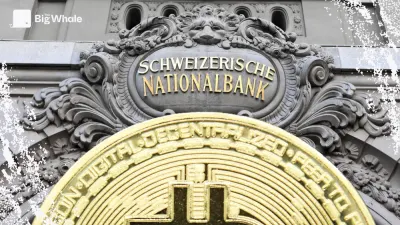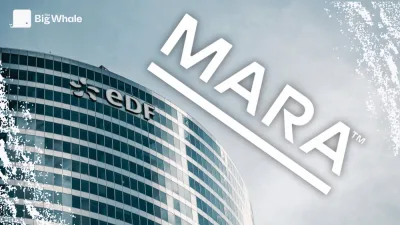TBW - Teddy Pornprinya (Plume Network): "Asset tokenisation will take off when there is more onchain cash".
"Asset tokenisation will take off when there is more cash onchain"

You keep saying that traditional finance and the crypto world are going to merge. How can you be so sure of this?
My background has given me a rather unique perspective on the subject: I started out in traditional finance in investment banking before switching to the crypto universe in 2021. My experience at Coinbase, in the investment team, and then at Binance for the NBB Chain, has allowed me to deepen my understanding of the crypto ecosystem and see how these two worlds, although different, are deeply complementary.
What did you do for NBB Chain?
I was in charge of onboarding new projects, particularly real world assets (RWA) - those 'real assets' that can be integrated into blockchain. CZ (former head of the platform, editor's note) and the team saw great potential in RWAs and wanted to develop this segment on the BNB Chain.
In discussions with various projects, I identified a mismatch between their needs and investors' expectations. Many were looking for help with distribution and technology infrastructure. Unfortunately, as a blockchain generalist, BNB Chain couldn't always meet these specific needs.
It was this realisation that prompted me to leave Binance and co-found Plume with Chris and Eugene, whose expertise complements my own. Our bet: to create a blockchain dedicated to RWAs.
Recently, we secured a strategic investment from Binance Labs, adding to the $30 million already raised with players such as Han Ventures, Galaxy Digital, SuperScript, Hashkey and other US institutional investors.
How much has Binance Labs invested in Plume Network?
The amount remains confidential.
Could you introduce us to Plume Network and tell us about your vision for the project?
Plume Network is a blockchain specifically designed for the tokenisation of real-world assets (RWAs). Our priority is to make them more accessible and understandable.
Take stablecoins, for example, which represent more than $200 billion in capitalisation. Technically, they are RWAs, but the general public sees them simply as cryptos indexed to the dollar. Our ambition is to similarly simplify access to RWAs, be they equities or real estate.
How do you plan to achieve this?
Our approach is based on three pillars: infrastructure, distribution and composability.
The infrastructure forms our foundation: a blockchain optimised for integrating RWAs.
Distribution is crucial: we simplify access to these assets for all users, from institutions to individuals.
Composability enables these assets to interact with the existing DeFi ecosystem (AMMs, lending platforms, DEX) to multiply use cases and liquidity.
Can you give us a concrete example of this integration between RWA and DeFi?
Our flagship product, NEST, is a perfect illustration of this synergy. It is a system of tokenised asset safes. A user can, for example, deposit funds in a safe made up of 30% Ondo assets, which are RWAs, and 70% Athena assets, which are DeFi products.
In return for their deposit, a user receives a liquidity token that can be used as collateral to borrow USDC and reinvest. This approach makes RWAs more dynamic, giving them the same fluidity as stablecoins in DeFi.
The main problem with RWAs is not supply, but demand. How do you see this problem?
The key issue is indeed to have more demand and for that we need onchain cash. When companies place their cash on blockchain, particularly via the use of stablecoins for cross-border payments, they will naturally seek to invest it in RWA.
Plume Network was launched in January 2024. How far has the project got?
Our growth is good. More than 180 partner projects are already ready to join our network. The testnet has attracted 18 million wallets, including 4 million unique active addresses.
Notable fact: we have succeeded in creating a dynamic retail community, which is unusual in the world of RWAs, traditionally focused on institutions.
With the proliferation of L2s and blockchains, how does Plume stand out?
In contrast to traditional L1s and L2s, which lack concrete RWA use cases, Plume has developed an architecture specifically designed to integrate real assets with DeFi. This specialisation naturally attracts investors, and we are seeing strong demand for both returns and issuance.
How do you monetise Plume Network and what is your business model?
Our model is based on two main sources: transaction fees and asset tokenisation fees.
The launch of your mainnet has been delayed. When do you expect its official launch?
The launch is scheduled for early Q2, in the coming weeks.
How do you expect to attract financial institutions like JP Morgan or BlackRock to Plume?
A paradigm shift is underway. Larry Fink, CEO of BlackRock, recently reaffirmed this in his annual letter to investors: tokenisation represents the future.
We are already working with several major institutions, including BlackRock, to tokenise their money market funds and private assets. These financial giants have understood that public blockchains offer superior connectivity and liquidity to permissioned solutions.
Where are you based and how do you see the crypto ecosystem evolving geographically?
Our headquarters are in New York, which is emerging as the new nerve centre of crypto in terms of innovation and regulation, although Asia, particularly Singapore, retains a significant share of capital.



